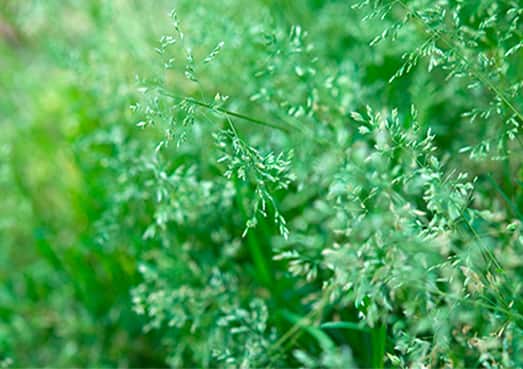Your Cart

Controlling Poa Annua
Poa Annua – A Grassy Weed

Nothing spoils the sight of a healthy, green lawn like unwanted weeds. Poa Annua, or annual bluegrass, is one of the most common weeds homeowners encounter as they tend to their lawn, flower beds and gardens. Simply referred to as "Poa," it is also a major problem on golf course greens and fairways. This cool-season annual weed tends to thrive in milder weather when lawns are more susceptible to weeds and disease. Its boat-shaped, flower-like seed heads and pale green color make it clearly distinguishable from desirable turfgrass species. Although annual bluegrass can be an issue on all lawns, it is primarily found in areas where Bermuda grass, fescue, and bentgrass are grown. Kentucky bluegrass (Poa pratensis) is a common cool-season turf species that is well adapted to cool, well-watered areas of your lawn. Rough bluegrass (Poa trivialis) is a less desirable turf/weed species that does well in moist, shaded areas, but lacks heat and drought tolerance. Annual bluegrass is a weed species that, unlike Kentucky and rough bluegrass, is able to survive low mowing heights (less than 1 inch) and still re-seed. Annual bluegrass can be a big problem for homeowners since it is not only an eyesore but weakens a healthy lawn by taking away the valuable nutrients needed to stay green and thick. Poa Annua leaves behind unsightly bare patches when it dies in the heat of the summer, causing lawns to take on a dry, unhealthy appearance. Additionally, like the majority of weeds, Poa greatly weakens healthy turf by monopolizing the valuable nutrients that desirable grasses need for survival. In fact, Poa will compete aggressively with the existing turf. This makes it difficult for your lawn to thrive and is especially harmful to maturing grasses that have not yet had the opportunity to become fully established. Poa will ultimately crowd out new grasses and leave bare patches in its wake. Even though annual bluegrass can be a problem in all types of turf, it is most obvious in Bermuda grass and bentgrass. “Poa” is a fast-growing weed, appearing in infested lawns as an undulating or irregular surface in as little as two days after mowing. It spreads rapidly because of its prolific seed production and seeds are spread by mowing, foot traffic, birds and cultivation. When it comes to Poa Annua, prevention is critical. Homeowners often take action when they notice the white, flowery seed heads adorning their lawns. Once Poa reaches this stage, however, it is often too late for safe post-emergent treatment. If you have had Poa issues in the past, you can be sure that they will return once again – whether annually, biannually, or sporadically. If given ample notice, your local Weed Man professional can apply a pre-emergent to target Poa Annua and other undesirable growth. When it comes to your cultural practices, raising the height of your mower can help defeat this low-growing weed. Deep, infrequent watering will also limit opportunities for the damp-loving Poa to thrive. To control annual bluegrass, the best defense is a good offense. This starts by maintaining a thick, healthy lawn with a strong root base. A dense lawn and root system will choke out “Poa” and other invasive weeds, and not allow them to take root and grow. Invasive weeds do not like to compete with a healthy, growing lawn. Cutting your grass higher (2½ inches to 3½ inches). Do not overwater. Eliminate areas of excessive moisture by improving drainage and infrequent, deep watering practices. Trim trees and overgrown bushes that hang over your lawn and provide excessive shade. Seeds and plant parts can contaminate equipment, particularly lawnmowers, and spread to new areas. Cleaning equipment prior to mowing or doing work in a new area of your lawn can help reduce the spread of “Poa.” “Poa” germinates in the late fall or early spring, so timing is important in controlling this hearty invader. Your Weed Man professional can provide a thorough inspection of your lawn and create a customized treatment program for your lawn. Brought to you by Weed Man Lawn Care: We care for your lawn.The three types of “Poa” commonly found include:
Poa Annua Issues
Preventing Poa Annua
Other tips for preventing annual bluegrass include:
 English (USA)
English (USA) Français (CANADA)
Français (CANADA)